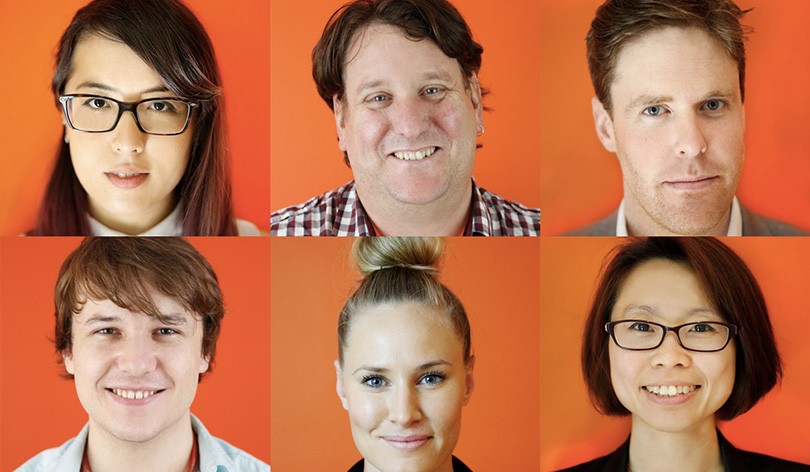How a Company Cut Turnover By Having 22-Hour Interviews
When Josiah Humphrey, co-founder and co-CEO of Appster, started growing his Australian-based app development startup, he and co-founder Mark McDonald began by trusting their gut. But those instincts didn’t work out so well, he confesses.
“We were making hires based on ‘Oh, this person sounds awesome’,” he says. But more often than not, in fact 70% of the time, the person didn’t meet their expectations.
When they realized they were losing a lot of money because of having to rehire, they decided to reboot their hiring process entirely. “We studied how companies like Google and Microsoft hire, especially, around making sure they find the best of the best,” says Humphrey and then went to work.
Appster didn’t copy the exact process of the tech giants, but instead used what they learned to create their own unique hiring system that allows them to find people based on the goals and mission of Appster. And although they’ve been known to sometimes spend a full 22 hours interviewing and assessing a candidate to get there, the results have been stunning.
Here’s how they hire:
Create a scorecard
“Before we even begin looking for a candidate we create a scorecard,” says Humphrey, “A list of the top criteria we’re looking for in a specific role.” They come up with these traits by talking to “A players” who’ve been superior in that role previously. Then Humphrey and his colleagues design a list of questions around the key criteria that will become the focal point for in-depth interviews.
Build-in automated pre-screening
When applying to an Appster position posted online, every applicant has to detail their last three roles in an online application. This provides Appster with a snapshot of the candidate’s recent work upfront. One question in particular helps Appster weed out a lot of unworthy candidates: “Who was your last direct report, and how would they rate you on a scale of 1-10 if we conducted a reference check with them?”
“This question makes people go, ‘Okay, these guys are actually serious about their reference checks, so I’m going to have to be honest here’.” If someone gives themself a six, that’s a red flag.
Phone screen for high performance, fit and competency
Those who are rated high after the initial application phase will have a phone interview of 30-60 minutes, where they’re being assessed both on high performance and cultural fit. Some will also be given short competency assessments, at this stage, “where they will have to do real world tests,” explains Humphrey, “so for a programmer we will actually have them code.”
Assign roles to different staff members
After passing through the phone screen and competency, Appster will invite the candidate in to meet multiple people over the course of couple hours. But this isn’t a casual chitchat, says Humphrey. Each staffer has been assigned a specific key-criteria that they are intended to probe the candidate about. For example, says Humphrey, “for a designer, one person might be assigned to talk to them about their ability to create a great user experience.”
Group discussion
Once a candidate leaves the in-person interviews, team members meet to assess and scrutinize how a candidate performed on each of the different criteria they were being rated on. Not only do they go over criteria at this stage, but they also discuss cultural fit. “If there are people that are saying, ‘No, we don’t think they’ll be a good fit,’ then usually we’ll leave it there,” says Humphrey.
Conduct a prolonged tandem interview
Candidates who survive the scrutiny of the group are invited back for what’s known as the tandem interview.
“The tandem interview is honestly quite long,” confesses Humphrey. “It’s usually up to four hours long and goes very in depth.” For this interview Appster assigns two people to the task. “One is doing the talking and asking questions, and trying to keep you comfortable, and the other one takes notes and looks at your body language.”
“We’re not only looking for competencies for the job, but behavioral, interpersonal, motivational, work ethic and culture fit,” says Humphrey. “We ask about strengths and weaknesses several times because towards the start of an interview most people don’t want to get into that,” he says. The length of the interview allows Appster the flexibility to circle back to topics that the candidate wasn’t willing to discuss initially.
Although there have been complaints about the process, those that make it through successfully are usually understanding. “When they said our last interview would be a four hour block I did not believe it,” shares Eliot Green, a candidate who went through the Appster hiring process recently and is now an Account Manager in the U.S. office. But during the interview, Green shares, he wasn’t thinking about the length. “I saw it as a good thing. I figured if they were this deliberate in their hiring there must be a reason why.”
Analyze body language
The person taking notes during the tandem interview looks at subtle signs to see how well the person can handle stress. “We watch them to see if can they cope with the stress of the four-hour tandem interview,” says Humphrey, “because some people snap.”
“We’re hoping to catch subjects that are brought up that cause the candidate to look uncomfortable or act a little suspicious in terms of their body language,” explains Humphrey, “where they maybe weren’t being totally honest. Then we will flag that topic and return to it later.”
Hire for passion and motivation
During all phases of interviewing, one of the top traits Appster looks for is passion and motivation. “Because we’re such a fast-growth company, a question we like to ask is, ‘What would references say is your general level of urgency?’ And we look for someone who would say ‘My general level of urgency is very high; I’m not someone that lazes about.’”
Another popular question is: “Rate yourself out of ten for passion. What would all the people that work with you say?”
Humphrey feels that passion is critical to building culture. “Someone who is a ten out of ten for passion, and just needs to be skilled up, would often be a lot better to hire than someone that has a five out of ten for passion and is very strong within skills.”
Conduct rigorous reference checks
Once Appster decides to move to the hiring stage, it’s usually because the candidate has scored close to all A’s on the 12 key criteria. Then Appster conducts a process of aggressive reference checks that delve deeper into the person’s competencies all over again. “We’ll have references rate them out of ten points on different criteria, looking to be sure they’re high performers. Then we also go out and conduct ghost references, with coworkers that weren’t given to us, in order to uncover more honest assessments.”
Give ‘em a real world assessment
Even after a candidate passes through all these hoops, in many cases they also have to come in for day and work on a test “dummy” project. If you’re a designer applicant, for example, “that might mean working on some user stories of a dummy project and having them design a UX flow based on their understanding,” says Humphrey.
“We had too many experiences where we thought someone was amazing,” shares Humphrey, “and then the first day on the job, you just go, ‘Well you interviewed really well, but didn't have the results in the real world’.”
Don’t be afraid to spend up front
Since implementing their new process, Humphrey shares, “Eighty percent of candidates hired are now working out,” meaning the company doesn’t have to let them go after several months, or radically change their job description. And that’s a big improvement over the 30% from the old days.
Sure it uses up a tremendous amount of time and resources initially, Humphrey says, but he wouldn’t change a thing. “Sometimes I have to admit doing a four-hour interview can be draining, but it’s really is worth it in the end.”
For his part, Green agrees, “I was tired after answering so many questions. There had to have been over 100!,” he says. But in the end it made him respect the company more and feel that he was making a good decision about going to work there. “I remember leaving and being impressed with Josiah and team,” he says. “It made me feel respected. While we talked about me a lot and explored my thought process, I also got a good feel for their culture.”
* image by Appster
To receive blog posts like this one straight in your inbox, subscribe to the blog newsletter.
Topics: Recruiting tips Interview questions
Related articles




